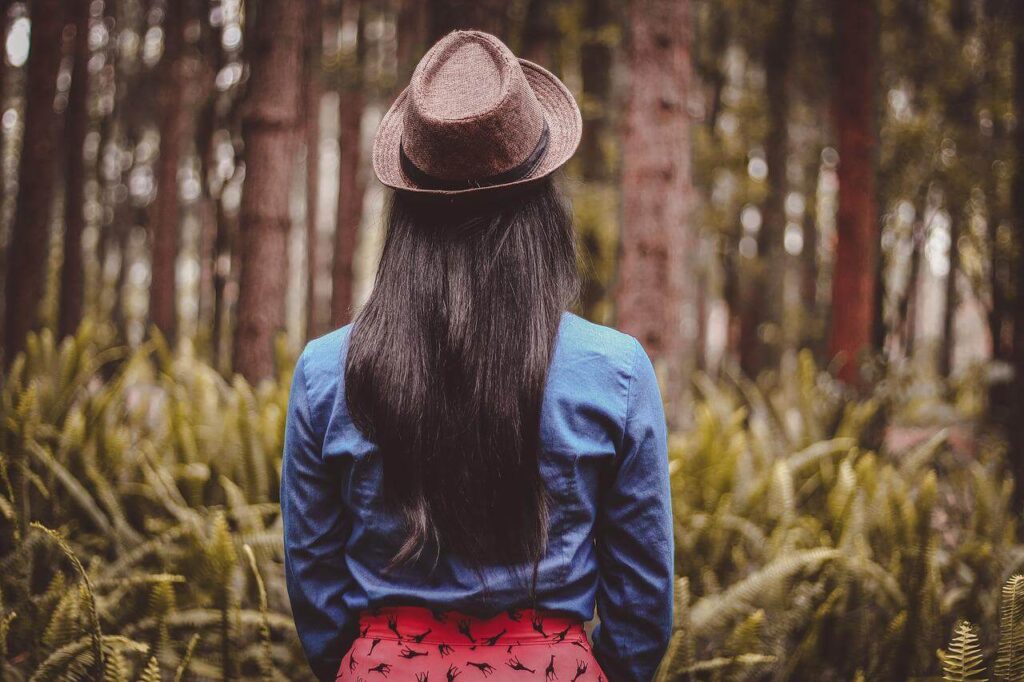Nowadays, you can do so many things with your hair. You can braid it in cute French braids, tie it up into a messy bun, or get your hair color changed to rose gold. Beach waves one day, sleek and smooth glass hair the next. Then, since it’s Saturday, why don’t you attempt balayage? By all means, give it a shot and let your fabulous locks do the talking. But watch out! Over-styling, over-lightening, or plain overdoing it can damage, brittle, and break your hair. Follow this advice from Matrix to avoid those things from happening, or to repair your hair if it’s already damaged.
1. Turn Down the Heat on Your Tools
Bless your curling iron, flat iron, and blow dryer with the blessing of the Lord. They’re the wands that turn your unkempt or unmanageable locks into lovely waves and curls or enormous, blown-out glory. All that heat causes dryness, brittleness, and flyaways.
One of the most common mistakes people make when styling hair with heat, according to Matrix experts, is setting the temperature too high. Unless your hair is thick or coarse, a mid-range temperature setting on your equipment would suffice. Try to avoid using heat on your hair as much as possible. You should look for air-dry solutions that will hold and shape your hair without using heat. Always apply a heat protection product to protect your hair from thermal damage when you turn up the heat.
2. Take Care with Wet Hair
Wet hair is at its most fragile. If your wet hair is fine, curly, or delicate, the risk of damage increases. So proceed with caution. Unless it’s a brush built for the job, never try to brush wet hair with a brush.
To detangle, most professionals recommend using a wide-tooth comb. When you get out of the shower, avoid rubbing. Instead, use a fluffy towel or, better yet, a microfiber cloth or soft t-shirt to blot your hair. This eliminates friction, which can cause damage to sensitive hair. When your hair is wet, don’t bind it with an elastic band because this can cause breaking.
3. Indulge in hair masks that are both rich and healing
Hair masks are a type of conditioning treatment. High concentrations of reparative and moisturizing components, such as vitamins, oils, and sourced elements, are found in them. They’re also thicker than ordinary conditioners, so they stay in place when applied to damp hair. This allows these formulae to penetrate deeper into the hair surface and patch in the gaps and nicks that appear on damaged hair’s surface. Even after you rinse a mask, it continues to work.
Choose a mask that is appropriate for your hair type, such as color-treated or coarse and unmanageable hair. Use your hair treatment mask at least twice a week, if not more.
4. Make Leave-Ins a Part of Your Life
Hair conditioners and leave-in treatments act as 24-hour protectors for your hair. Because you don’t rinse them out, they continue to serve and protect you from shampoo to shampoo. Leave-in conditioners, like other hair treatments.
UV hair protection provided a leave-in conditioner for colored hair, for example, to prevent color loss. A leave-in conditioner for frizzy, hair adds hydration and makes hair smoother and easier to maintain. Apply leave-ins to damp, not soaking wet, hair and comb through with a wide-tooth comb for optimal results.
5. Seek professional help
For damaged hair, a DIY routine isn’t always enough. That’s when you’ll need to call in the experts. In-salon hair treatments use the highest concentration of active chemicals. From over-processed or fragile strands to hair in desperate need of hydration, they deal with any form of hair damage. A hair damage treatment is usually applied right at the shampoo bowl, and because these compositions are so concentrated, you’ll notice and feel a difference right away!
6. Strengthen Your Relationships
The procedure of chemical treatments is one of the reasons why damage happens when you color or lighten your hair. Hair color and lighteners must loosen the structural links of your hair to perform. Your hair is more prone to breakage, dryness, and damage if the hair connections disrupted.
Your hairdresser can prevent bond degradation by using specific bond-preserving products in your hair color and lightener. Furthermore, these formulae include preventative actions to avoid future harm. Professional bonders known on as “game-changers” in the world of hair health by clients who undergo regular and severe hair color shifts.
7. Tidy Up Those Split Ends
Have you ever snagged a delicate piece of fabric, only to watch as the tiniest snag unravels a large section of the garment? When the ends of your hair split, this is what can happen. From the bottom up, the hair will unravel, resulting in a dull, broken, frizzy mess.
Keep your hair supple and strong with strengthening shampoos, conditioners, and leave-in treatments to avoid split ends in the first place. Visit your hairstylist for frequent trims to prevent split ends from getting out of hand. Your hairdresser can “dust” the ends to keep your hair healthy, strong, and un-frayed without losing much length.
8. Take Care When Swimming and Sunbathing
Regular laps are beneficial to your body, but they are not so beneficial to your hair. Hair can become brittle and fragile as a result of salt water, chlorine, and other pool chemicals, not to mention the damage they do to your hair color! Wear a swim cap to protect your hair if you’re a swimmer. Protect your hair from too much sun exposure if you’re going to the beach, as it can be drying and cause your hair color to fade. Put on a cap! Applying a hair mask before leaving the house will treat and protect your hair while you’re out. Cleanse and condition your hair right away after swimming or sunbathing using mild, hydrating formulations.
9. Do not allow your hair to become thirsty
Because dry skin seems cracked and drab, you should always use a moisturizer. Dry hair is the leading cause of hair damage and breakage because, like your skin, if your hair doesn’t have enough moisture, it will become brittle and fragile. If you have dry hair, follow a moisturizing routine that includes a hydrating shampoo, conditioner, mask, and leave-in conditioner. It’s the simplest technique to keep your strands from drying out.
10. Shampoo
Choose a shampoo that is sulfate-free and designed for damaged hair. Using shampoos with natural-origin elements will aid in the restoration of your damaged hair.
On the second or third day, use a dry shampoo to rejuvenate your hair and scalp. Finally, rinse your hair with lukewarm or cool water and a shot of chilly water to end the shampooing procedure. Damaged hair can enjoy cool or cold water because it closes the hair cuticle and causes the hair shaft to lie flat, resulting in shinier, smoother hair.
Read More: Side Effects of Hair Rebonding


